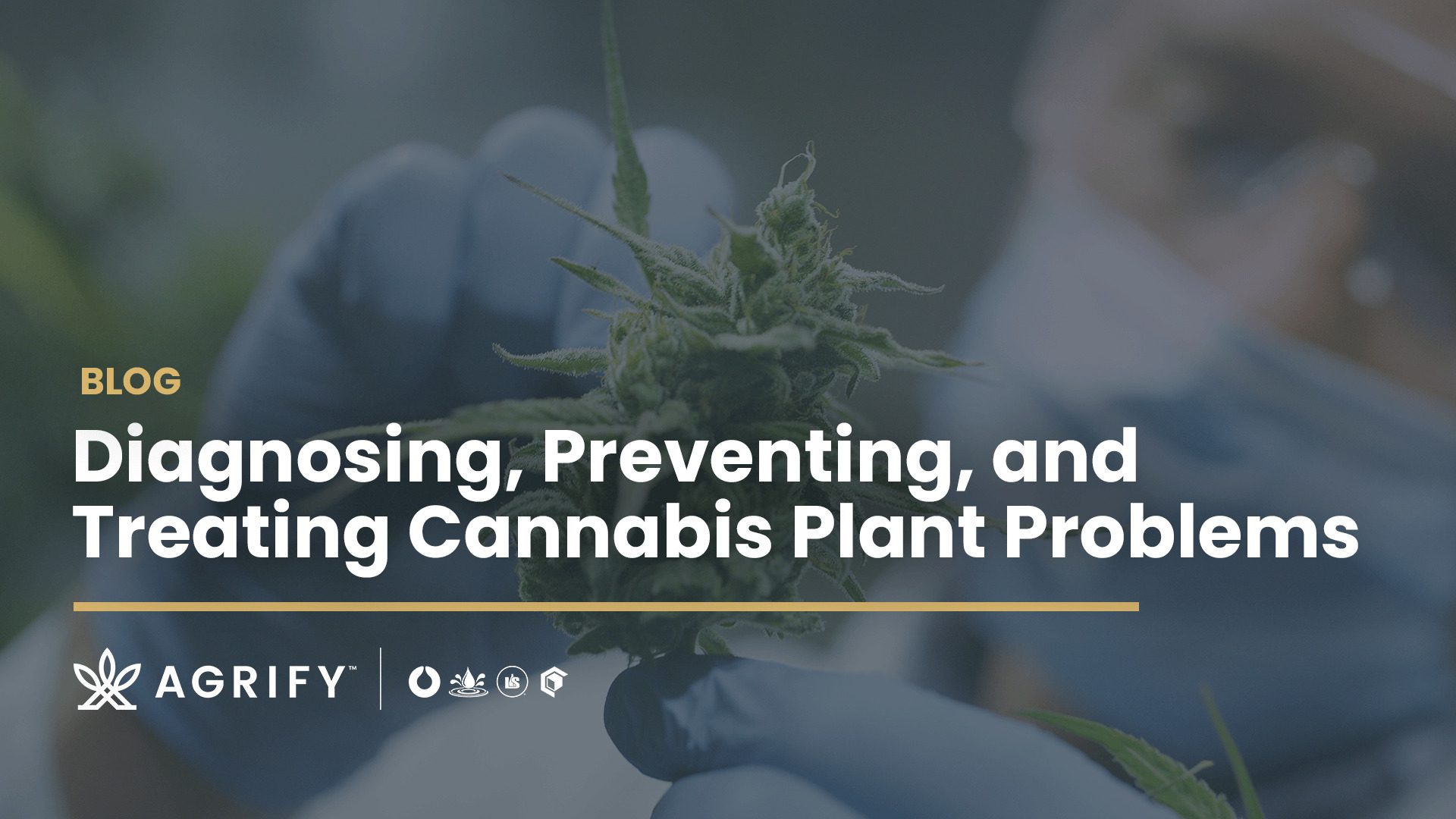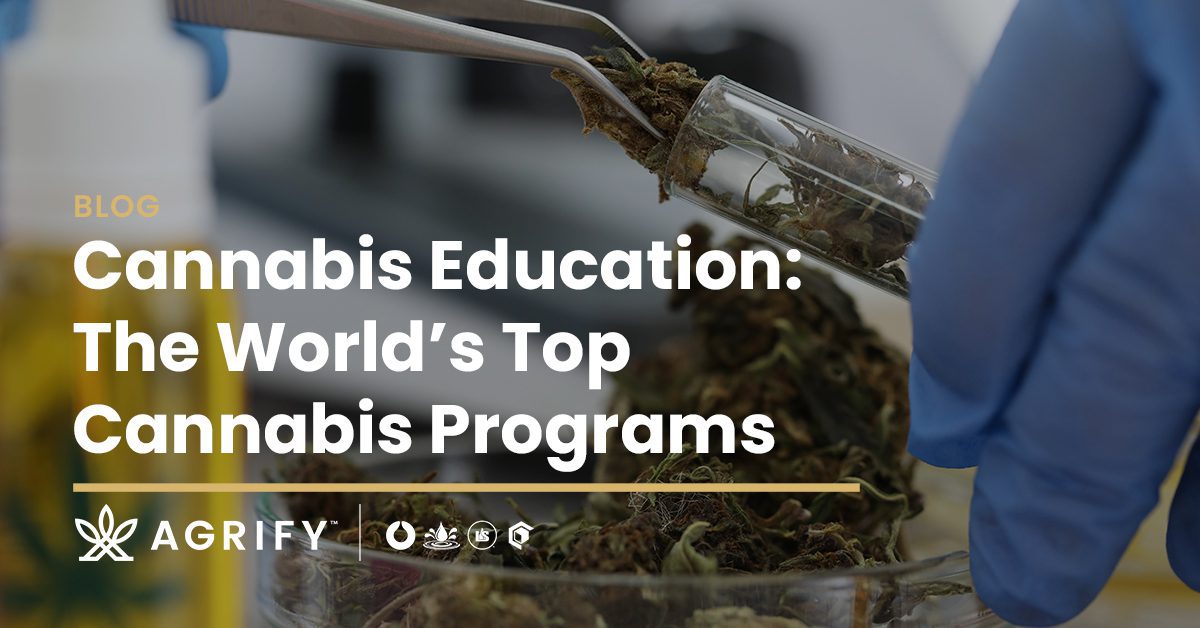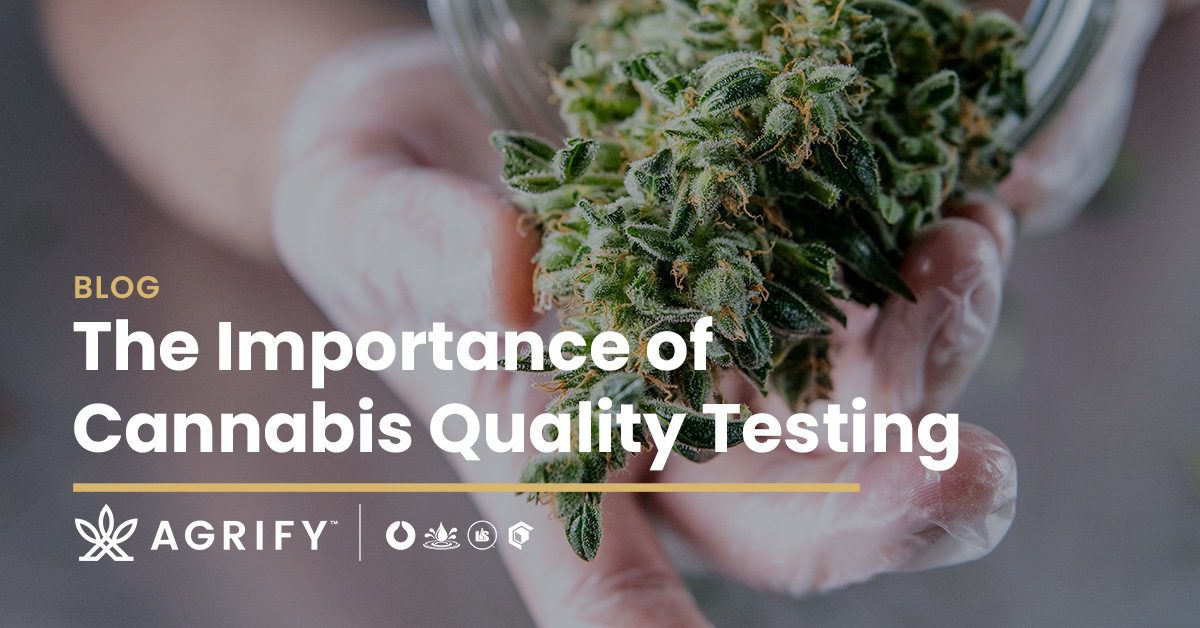How do we control cannabis pests?
Cannabis cultivators aren’t alone in their fight against pests in the indoor environment. Growers from all industries face the same ongoing issues with aphids, thrips, and mites. But in cannabis, scientific research lags decades behind other more conventional indoor crops.
Thanks in part to the years of prohibition, pest control options for indoor cannabis facilities aren’t nearly as advanced as they could be. However, cannabis’ unique morphological and biochemical features add another layer of complexity.
How do growers in today’s safety-conscious sector tackle indoor pest control? It boils down to Integrated Pest Management (IPM) through practical habitat modification and facility design.

Complexities of Pest Control in Indoor Cannabis Cultivation
Cannabis poses many challenges for traditional pest controls. For starters, many of the pesticides approved for use on other crops — lettuce, tomatoes, and peppers, for example — are not approved for use with cannabis.
Pesticides have been largely developed for crops that are eaten. As a result, there is little to no information about the chemical properties of these treated crops should they get smoked or vaped. This has meant that most of the chemical interventions available to traditional indoor crops do not apply to cannabis, a smokable and vapable consumer product.
And while this may change with more research and standardized third-party testing, increasingly consumers are demanding pesticide-free products, including cannabis.
Jason Lemay, Youbin Zheng, and Cynthia Scott-Dupree outlined several other complexities for cannabis pest control in their recent article for PERSPECTIVE. Firstly, cannabis’ phytochemical production may limit how effective beneficial biological control agents (beneficial insects) are at finding their prey.
Secondly, a plant’s trichome density could also hinder the performance of these beneficial insects. Considering cannabis cultivators are hyper-focused on producing trichome-rich flower, will anyone be willing to trade a crystal coating for pest controls?
A final consideration revolves around the effects of different photoperiods and spectrums on pests and the biological agents deployed to get them under control. How do different species react to the aggressive lighting schedules used for indoor growing?
Cannabis’ morphological, phytochemical, and agronomic characteristics mean the industry requires a specialized approach to pest management.
Advances in Pest Control in Indoor Cannabis Cultivation
Before legalization and testing, black market producers relied on aggressive pesticide applications to keep their grow rooms pest-free. But these days, the IPM methodology reigns supreme among indoor growers.
IPM, which is “an ecosystem-based strategy that focuses on long-term prevention of pests or their damage through a combination of techniques such as biological control, habitat manipulation, modification of cultural practices, and use of resistant varieties,” is the safest option for growers and for consumers.
Following this mantra, what IPM resources can growers tap into in their own grow spaces to reduce the risk of a crop-devastating infestation?
Environmental Control
Habitat manipulation and modification is a facility’s best resource for combating pests in the grow room.
For example, if pests are brought in on a single clone, they can quickly move throughout a grow room, potentially compromising an entire crop. With an industry reliant on massive warehouses for large-scale production, the risk of a few aphids or mites exploding into a facility-wide problem cannot be overstated.
What if growers modified this expansive environment to minimize the risk of an infestation?
Agrify’s Vertical Farming Units (VFUs) shrink the standard grow room into precision-controlled microclimates. Each unit contains up to 64 plants and is enclosed with motorized curtains with dual-sided access points.
Compartmentalized vertical growing confines pests to a single unit but doesn’t compromise on production potential.
Standard Operating Procedures
Another approach for pest management is to refine Standard Operating Procedures (SOPs) and other employee processes.
The primary vehicles that pests have to travel from one zone to the next in a modern cultivation facility are people, tools, and equipment. Employee hygiene for cannabis cultivation is one way to reduce the spread. “Hygiene” in this sense encompasses the protocols for people moving between rooms, cleaning equipment, and task clean-up.
Double down on the SOPs covering personal protective equipment, plant quarantine, and equipment handling to reduce the risk of an infestation spreading throughout a facility.
Improved Scouting and Crop Monitoring
In-person crop monitoring is a routine task done across all indoor facilities. There is often no better tool than a visual inspection by an experienced staff member. Yet, no matter how necessary this task is, most operations haven’t been designed to facilitate this job.
Most indoor facilities grow under the traditional horizontal model: large-scale rooms with a sea of canopy stretching from one corner to the next. Horticultural benches are at challenging heights and/or plants are stacked many rows deep.
Employees often struggle to monitor plant distress and pests in this environment. Why? Because worker ergonomics haven’t been considered. Bending over at odd angles, reaching through dense foliage, and stretching in unnatural ways is physically exhausting. Not surprisingly, even if a task is technically easy, when ergonomics haven’t been factored in, performance rapidly devolves throughout the run of a shift.
How can facilities make scouting more effective? First, improve access to the plant canopy.
Agrify’s VFU ensures every plant is accessible and within easy arm’s reach from both sides of the unit. Visual inspections are faster and more thorough when employees’ natural movements are part of the design. Every task is more efficient and more effective with ergonomic design principles.
Smarter Pest Control Solutions in the Grow Room
Ongoing research is investigating effective pest control solutions for cannabis, given the plants’ unique morphological and phytochemical expressions. Until then, cultivators have to rely on advanced IPM options, including improved environmental controls, refined SOPs, and better crop monitoring.
Given the challenges the traditional indoor grow room creates for pest control, it’s time for producers to work smarter, not harder. With new facility designs like Agrify’s vertical solutions, which inherently reduce the risk of pests and make canopy inspection easy, cultivators are achieving their production goals without compromising the product.








